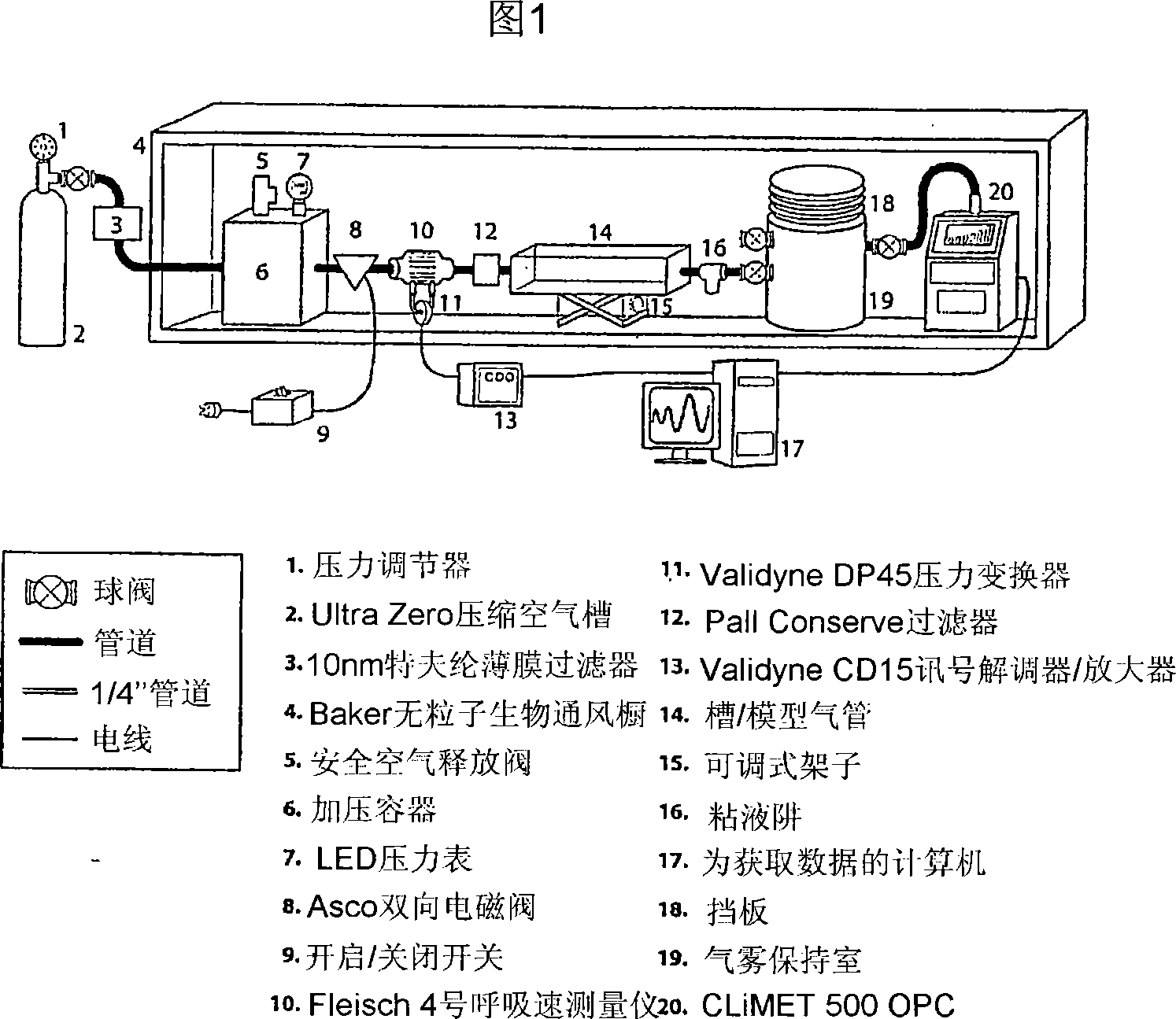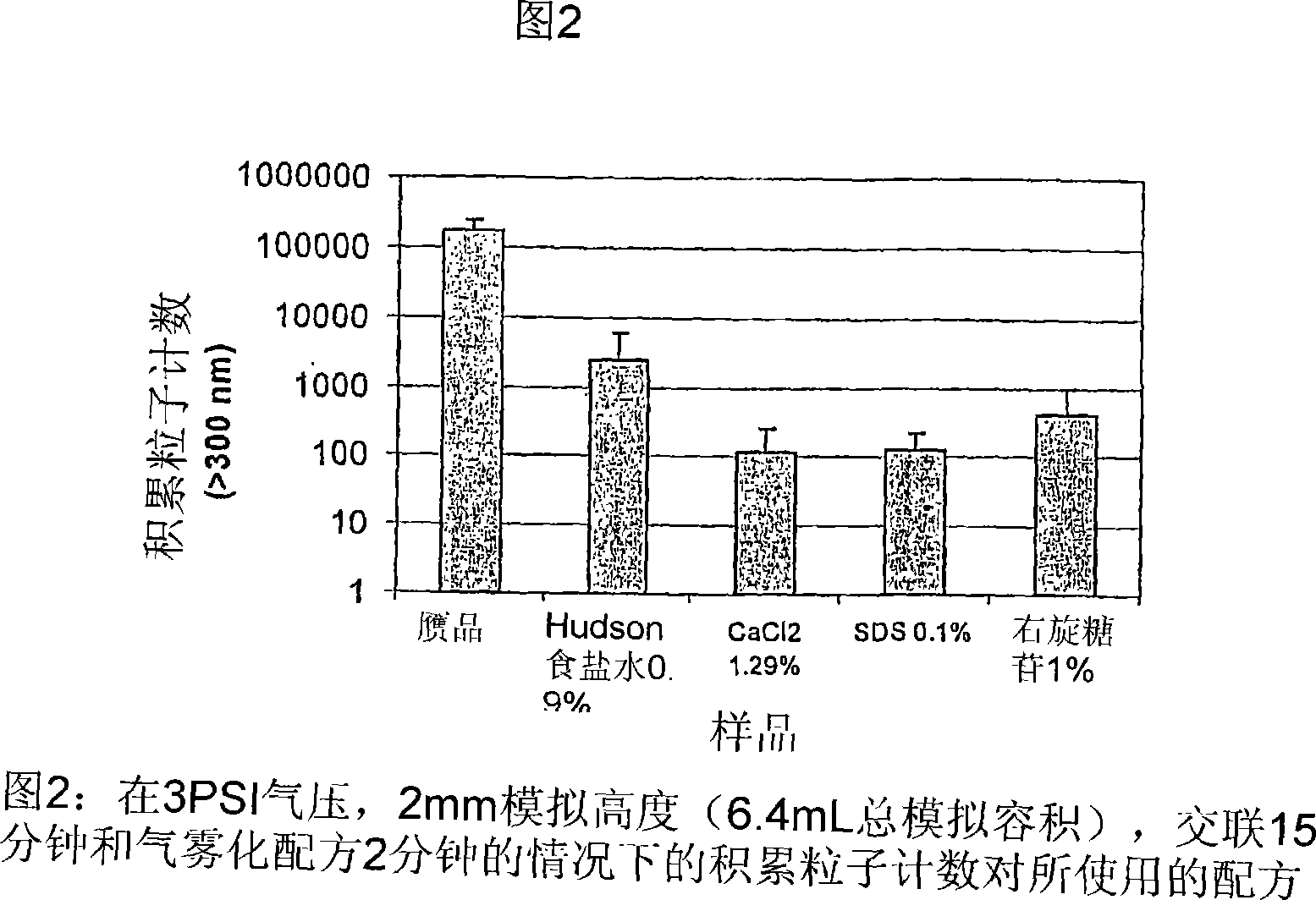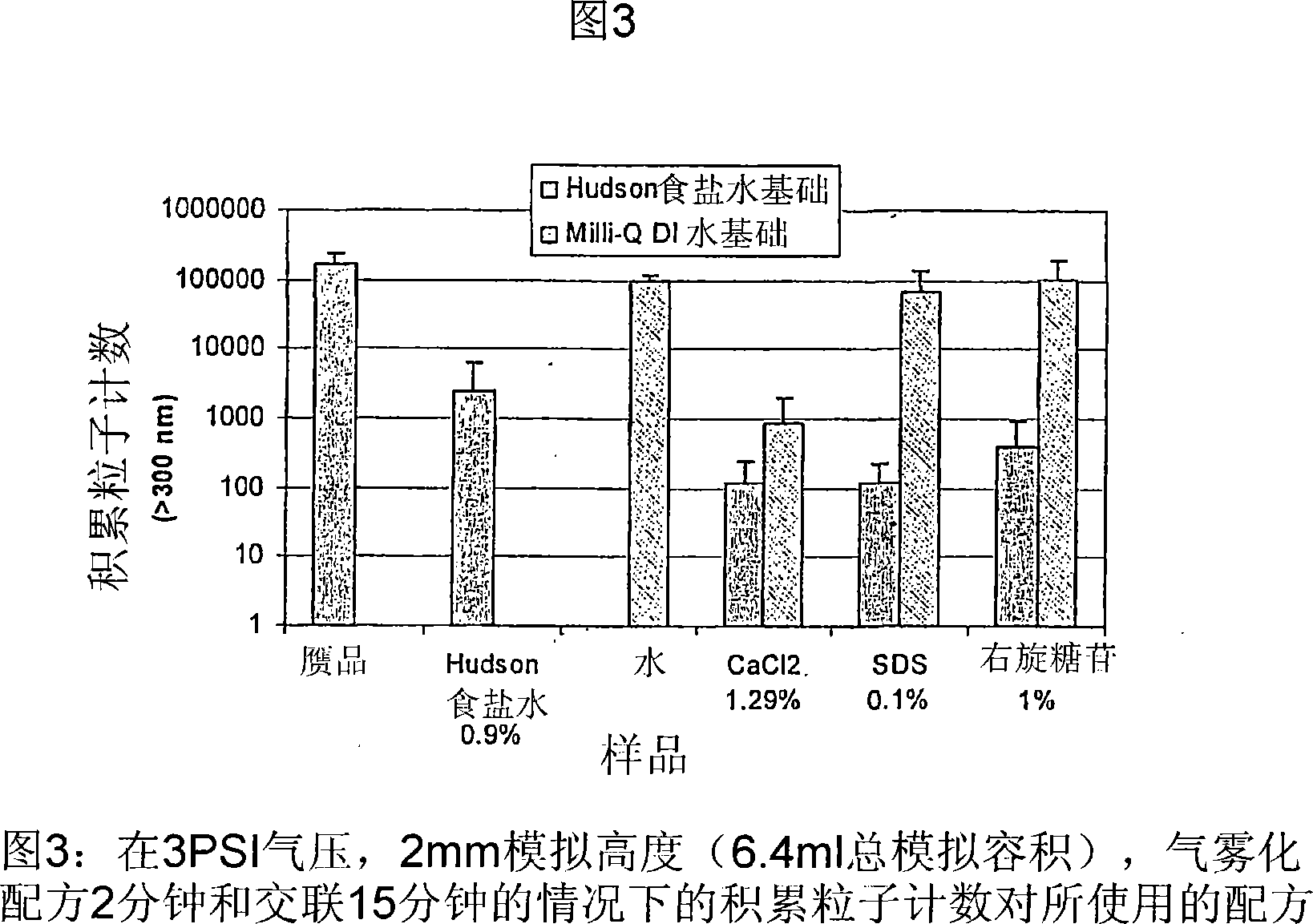Formulations for alteration of biophysical properties of mucosal lining
A formulation and lining technology, applied in the direction of pharmaceutical formulations, medical preparations with non-active ingredients, medical preparations containing active ingredients, etc., can solve the problem of harmful mucous membranes
- Summary
- Abstract
- Description
- Claims
- Application Information
AI Technical Summary
Problems solved by technology
Method used
Image
Examples
Embodiment 1
[0123] Example 1: Using SRM equipment to study the impact of different formulations on the number of particle counts in vitro
[0124] The four formulations were tested in vitro using the SRM apparatus as described above and compared to a mucus simulant alone (sham) used as reference. The mucus mimic product and SRM method described above were used in each experiment. The following formulations were tested: (1) 0.9% isotonic saline, (2) 1.29% calcium chloride (CaCl 2 ) in 0.9% isotonic saline solution, (3) 0.1% sodium dodecyl sulfate (SDS) in 0.9% isotonic saline solution, and (4) 1% polydextrose in 0.9% isotonic saline solution. For all tests, the simulated height applied to the tank was maintained at a fixed 2mm height (6.4ml total simulated volume). The simulants were allowed to crosslink for 15 minutes and each formulation was then aerosolized using the Aeroneb Go (Aerogen, Mountain View, CA) to the simulants for 2 minutes prior to testing. Each test was repeated at lea...
Embodiment 2
[0126] Example 2: In vitro measurement of formulation (in saline and aqueous solution) effects on reduction of exhaled particulates using SRM equipment
[0127] To further understand the mechanism of particle inhibition, the formulations were prepared in deionized (DI) water and saline. The mucus mimic product and SRM method described above were used in each experiment. For all tests, the simulated height applied to the tank was maintained at a fixed 2mm height (6.4ml total simulated volume). The simulants were allowed to crosslink for 15 minutes and each formulation was then aerosolized using the Aeroneb Go (Aerogen, Mountain View, CA) to the simulants for 2 minutes prior to testing. Each test was repeated at least 3 times and then average cumulative particle count and standard deviation values were calculated. These results are graphically depicted in FIG. 3 .
[0128] As shown in Figure 3, when the saline used in a particular formulation was replaced by deionized (DI) ...
Embodiment 3
[0129] Example 3: The conductivity value of different formulations and the influence of formulation conductivity on the cumulative particle count when using SRM equipment in vitro measurement
[0130] To determine the effect of formulation charge / conductivity on the inhibition of particle formation, the conductivity of different formulations was measured and plotted against cumulative particle count. The following 10 formulations were tested: (1) 0.45% saline, (2) 0.9% isotonic saline, (3) 1.45% saline, (4) CaCl 2 In isotonic saline (1.29%), (5) CaCl 2 In DI water (1.29%), (6) CaCl 2 in DI water (1.87%), (7) SDS in isotonic saline (0.1%), (8) SDS in DI water (0.1%), (9) polydextrose in isotonic saline (1%), and (10) Polydextrose in DI water (1%). Conductivity values for each of the different formulations and mucus simulants were measured using a Brookhaven ZetaPALS particle sizer (Brookhaven Instruments, Holtsville, NY). This instrument measures the zeta potential of a g...
PUM
 Login to View More
Login to View More Abstract
Description
Claims
Application Information
 Login to View More
Login to View More - R&D
- Intellectual Property
- Life Sciences
- Materials
- Tech Scout
- Unparalleled Data Quality
- Higher Quality Content
- 60% Fewer Hallucinations
Browse by: Latest US Patents, China's latest patents, Technical Efficacy Thesaurus, Application Domain, Technology Topic, Popular Technical Reports.
© 2025 PatSnap. All rights reserved.Legal|Privacy policy|Modern Slavery Act Transparency Statement|Sitemap|About US| Contact US: help@patsnap.com



